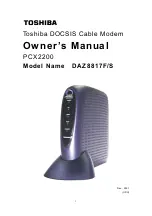
5 PTC-Firmware
defined with the arguments following this sub-command. If there is no sub-command
given and the nummeric parameter follows directly to the
APRS
command, then this
parameter defines the APRS main mode.
APRS digipeating is not supported directly, but the normal digipeating features can be
used for
simple
APRS digipeating as well. An universal APRS digipeater can also be
established using a free program like UI-View.
APRS data is always transmitted using the modulation defined with the command
Baud
(or
%B
in hostmode), (refer to chapter
on page
5.11
Robust HF-Packet
Up till now Packet-Radio over shortwave has been basically a non-starter, has even been
heavily criticized because of the low effective throughput and many repeats due to
missing robustness. AX.25 is for shortwave not an ideal protocol, but with automatic
FRack
setting and a small
MAXFrame
value the protocol should however function much
better on a shortwave channel than has previously been the case generally.
One cannot of course expect an asynchrones Protocol to reach the same efficiency as a
small synchrones ARQ protocol (e.g. PACTOR), but for some applications a multi user
service with very uncritical transmit/receive switching, as well as almost zero power
holding up a connection when no data passing, brings a real advantage that outweighs the
lower data throughput.
What are the reasons then, that up until now HF-PR works so poorly, and apart from
“forwarding” is hardly ever used? There is a simple answer: The current modulation type
for HF-PR namely uncoded 300 baud FSK is really unsuitable for normal HF channels.
The symbols are much too small even with moderate “multi path effect” (“delay spread”)
to work. Additionally because no sort of error correction code is used, even short troughs
or “statics” will destroy a many seconds long packet. Just one missing bit leads to a repeat
of the whole transmission.
To overcome this problem
SCS
has developed a new class of robust modulation types
especially for Packet-Radio. As a special feature for all the variants of this “Robust-PR” a
completely new synchronization algorithm with tracking properties that were not possible
before has been realized.
Frequency deviations from/to ±250 Hz are immediately
recognized and compensated without any loss of sensitivity
, and this also with signals
that are buried deep in the noise. Because of this it is possible to remove a tuning display.
One can say with good conscience this is “Plug and Play” for shortwave.
The 3.6 firmware makes available a small band (500 Hz) version of the “Robust-PR”. A
wide band variant (2 kHz) with similar characteristics and 4 times the speed is in
generally possible.
The current “Robust-PR” modulations schemes have the following characteristics:
Bandwidth:
500 Hz @ -30dB.
Modulation:
Pulse-Shaped OFDM (BPSK, QPSK); similar to Pactor-III
Average throughput: 200 or 600 Bits/s (Increase to 1200 Bit/s possible)
Crestfactor:
3.0 or 4.2 dB
32
Содержание PTC-IIex
Страница 14: ...List of Figures and Tables XII...
Страница 30: ...3 Installation 16...
Страница 108: ...7 Audio 94...
Страница 126: ...8 FAX 112...
Страница 173: ...12 SYStest 159...
Страница 183: ...14 Circuit Description 169...
Страница 195: ...15 Basics 181...
Страница 201: ...B Technical Data 187...
Страница 202: ...C Layout Appendix C 19 Layout B 1 Motherboard Figure B 1 Motherboard 188...
Страница 203: ...C Layout 189...
Страница 215: ...Index 202...
















































